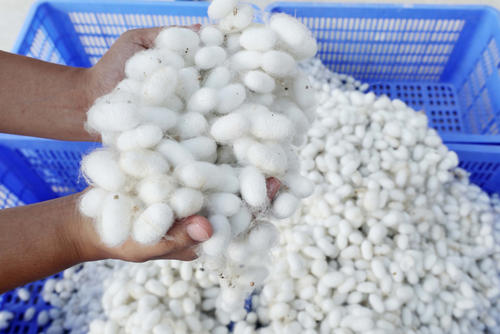Guangxi’s silkworm cocoon production ranks first in the country in 2019
Sep 08, 2020 | by Zhao xh

The silk industry originated in China and has a history of more than 5,000 years. At present, the output of silkworm cocoons and raw silk in China accounts for more than 70% of the total global output. In recent years, the area of China’s mulberry orchards has shown a downward trend. In 2018, the area of China’s mulberry orchards was 11.849 million mu, an increase of 0.15% compared to 2017; the area of China’s mulberry orchards in 2019 was 11.329 million mu, a decrease of 520,000 mu compared with 2018, a year-on-year decrease of 4.39%.
In 2019, Guangxi’s silkworm cocoon production ranked first in the country, reaching 374,000 tons; followed by Sichuan, with 88,500 tons of silkworm cocoons; Yunnan with 73,500 tons of silkworm cocoons, ranking third; fourth to tenth, Jiangsu, Guangdong, Zhejiang, Shandong, Anhui, Hubei, Chongqing.
In 2019, Guangxi’s silkworm cocoon output accounted for 51.89% of the national output, and Sichuan’s silkworm cocoon output accounted for 12.27% of the national output; Yunnan, Jiangsu, Guangdong, Zhejiang, Shandong, Anhui, Hubei, Chongqing, and Shaanxi accounted for 10.20%, 4.63%, 4.01%, 2.62%, 2.46%, 2.22%, 2.05%, 1.89% and 1.72% of the national output, respectively. In 2018, the average purchase price of China’s silkworm cocoons was 2,341 yuan/50 kg. In 2019, it was 168 yuan/50 kg lower than that in 2018. In 2019, the average purchase price of China’s silkworm cocoons was 2,173 yuan/50 kg.








